First aid supplies are general things most families keep on hand for emergencies. Great advice from an RN of 20 years.
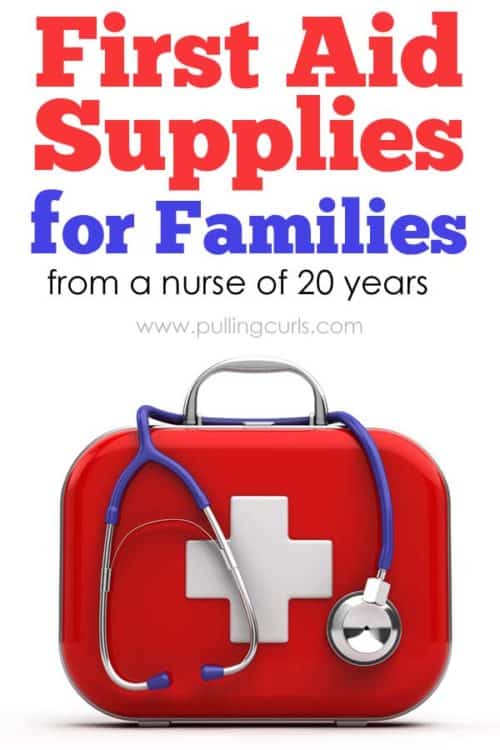
Picture it: We were doing extended family pictures in the Tetons. My neice took down my son (they were all 3 or 4 at the time), slamming his head into the gravel. It was a pretty long cut and I even felt like it might need some stitches (mainly because of how deep it was). However, the national park system healthcare spot had just closed and the other option was to drive 2 hours to the next one.
So, having your own first aid kit can really save you. It isn’t JUST for things when you’re not close to medical care, but those times it’s just extra helpful!
Don’t worry about writing this all down — I can send the list straight to your inbox so you can get started getting it all together today!
I wanted to share some things you’ll want to have both in a very basic first aid kit and also an extensive one.
Top 8 First Aid Supplies
- Bandaids: I’d have a good variety, but don’t go wild. A large band-aid can do a lot of things, and then you can go purchase a specialty band-aid if necessary. Get a good variety pack (leave most at home in the linen closet and refill when necessary).
- Neosporin: This is a great way to clean up a cut. In recent times Neosporin has made it a lot easier to have small amounts that can help. This one is great to keep in your kit!
- Sanitizer: This will hurt like a son of a gun if you put it on a cut, but it will also help to clean the skin and prevent infection (when used along with Neosporin). You could also use alcohol — they’re pretty much the same. A small bottle like this is handy
- Gloves. If you stop at a scene and need to help someone, I’d just recommend having some gloves. Just protects you. They can easily be smushed into a very small container and not take up much room. I’d get medical grade (not food grade) as they are a little more sturdy. Plus, they’re handy to have around the house anyway.
- Gauze: A small amount of gauze (or even kleenex) can help wipe away any blood that is obstructing your view of seeing what’s really going on.
- Scissors: not just for first aid I think these can be super helpful — I actually have often just stolen an old pair of my kid’s — those are the best kind.
- Small amounts of medication: Things like Tylenol, Benedryl or ibuprofen can be very helpful. This is a great way to use small bottles from the dollar store.
- Clean, large bandana. You can use a triangular bandage to do a lot of things. It’s kind of tough to find an actual triangular bandage — so a VERY LARGE bandanna can do most of the same things. You can also get actual triangular bandages on Amazon pretty cheaply.
If this list is overwhelming you. This one from Amazon seems to be a great option you can buy all at once.
I keep a very small walking pharmacy with me most of the time. I talked about it in this post about what to take to Disneyland (don’t worry — it’s also got great info on that too).
Other great first aid items:
Water
I especially love water with a “squirt cap” that you can use to spray out cuts (which is what I did for my son when we were in the Tetons)
Tweezers
Helps you pick out gravel, or approximate edges of a wound if you’re going to seal it together. You can use whatever kind you have. Or, one time I used some from a mini pocket knife (which is another great thing to have in a first aid kit). Be sure to sanitize them before you use it!
Super Glue
Yup, we use it in the hospital and it CAN be used in an emergency. Keep a few things in mind with glue:
- It seals the wound, so you want to make sure that any “bad” stuff is out of the wound before you seal it — you’ll want to rinse it out and use your tweezers appropriately
- It is not great for faces. You’re not going to get the edges together as well vs how a doctor might use stitches. However, when it’s in your child’s hair or somewhere normally covered by clothes, you don’t have to worry as much!
I really like the mini super glues — that way you can just use it once (with a clean tip) and throw it away.
I’m not gonna take on the liability of showing you how to approximate a cut with superglue, but I am sure there are some YouTube videos. 🙂
Frankly, it’s pretty much like it sounds.
Butterfly Bandages/Steri Strips
These can be used to bring the edges of a wound together. They’re much easier to use than Super Glue (as they can be peeled off). Make sure the area is as dry and hair free as possible before you put them down. And, they’re crazy cheap on Amazon! Share the giant box with friends!
Burn Cream
This helps to prevent infection and also contains some “numbing” properties to make it less painful. Love how they have individual packets!
Other Meds
Tums, Aspirin (super important if someone is having a heart attack — 911 may ask them to chew an aspirin). If you’re stocking a kit away from home — Amazon has some cool single-use packets of medications.
Cold Compress
There are mass-produced compresses that can be turned cold in the press of a button (great for your car). Of course, if it’s at home I always recommending keeping some in your freezer (or borrow your kid’s from their lunch box).
Gauze Rolls/Telfa
Gauze like this is a great way to hold something on a larger wound than a bandaid can handle. Telfa is a non-stick pad to place on the wound.
Ace Bandage
This is SO important to have at home. I like to quiet my kids whining by wrapping their appendage with an ace wrap. I’d recommend one with Velcro (vs the pins that can fall off).
Tape
Great to secure gauze or whatnot. This isn’t the time for scotch. Make sure to get medical tape. There’s plastic or paper. This tape is also very handy — it sticks to itself — but not you (great for splints or wrapping toes together).
Finger Splints
These are nice to immobilize a jammed, sprained or possibly broken finger. Some need tape to secure (and some self secure).
**Again, if you’re assembling for the first time — it might be smart to just buy a complete one on Amazon, and then add from there.
Other stuff rich people should consider:
AED: Yup — this is the thing we use to shock people. If you COULD have one, it MIGHT save a life someday. If I had a billion dollars, I’d certainly consider buying one for my church or any local place that I frequent and could be helpful.
I don’t think most families need that on hand. Especially if you live in a city with a quick EMS response time. If that’s the case — just be sure to have some aspirin on hand!
The best news — I can send this list straight to your inbox! Also, check out my other family health posts below that form!
[pt_view id=”d218d8581b”]
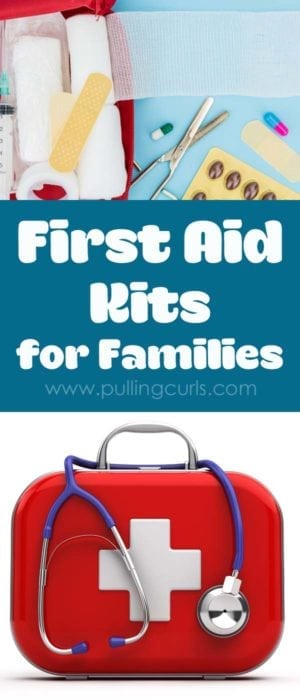

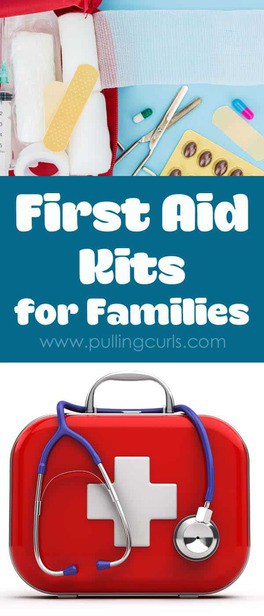

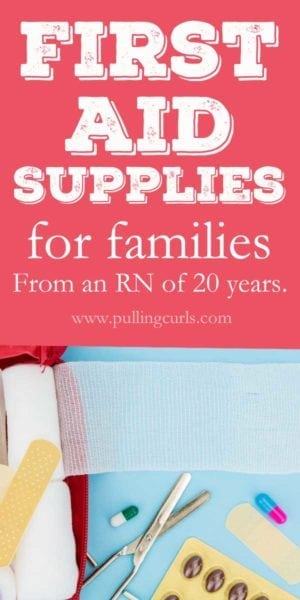
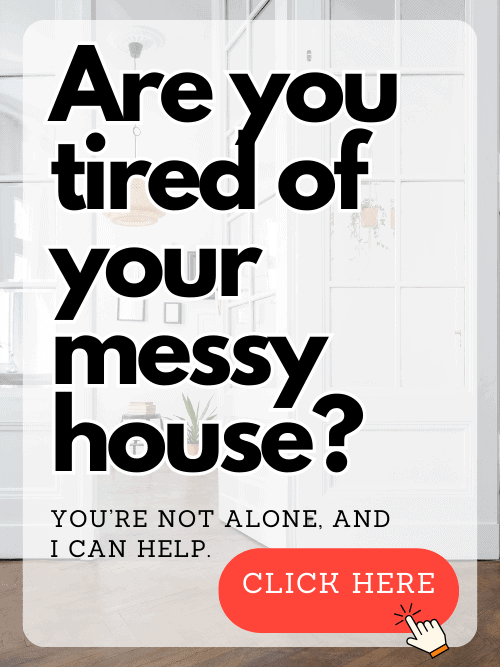



Annie says
Good list! My sister cut her finger on a mandoline slicer. I had the supplies on hand to stop the bleeding. After determining that she was completely missing skin (thereby with nothing left to suture), we dealt with the wound.
Best part of it: She made an appointment at the doctor’s office the following day, just to be on the safe side. $100 vs thousands if we rushed her to the emergency room.
Hilary Erickson says
Yup, a regular doctor’s visit is so much more reasonable!